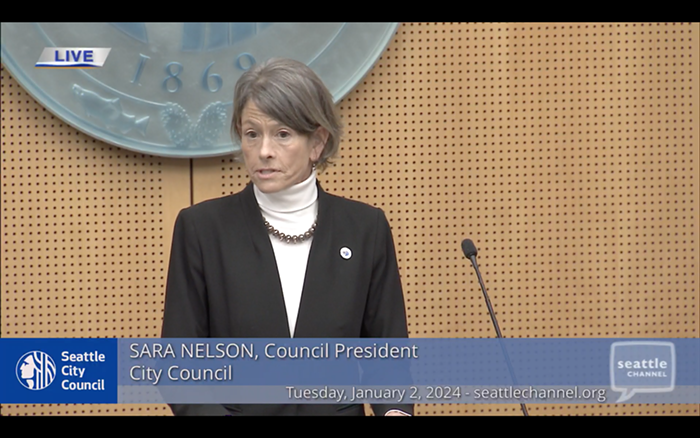
It is autumn. The leaves—red, gold, brown, and orange—are about to fall, are falling, have fallen. The fallen ones form a crunchy carpet around the tree they served during the sunny days. The leaves did with light what human-made dams do with water: convert free energy into usable energy. But during the colder days, the broad leaves of deciduous trees tend be more useless than useful, and sometimes even dangerous. Dangerous because, as we saw on Oct 13, 2020 in Seattle, autumn brings with it more wind. Because of this, the leaves become sails that, if the wind is strong enough, can uproot a whole, old, weighty tree.
Broad leaves can also break a tree like that if they catch and hold too much snow. Leaves have to go. The days are shorter and shorter. The nights are longer and longer. The grounded leaves decompose into loam. This system was doing just fine until humans found the dead leaves to be a nuisance. The deepest historical record of the rake we have is found in China. It appeared there about 1,100 years before the Romans nailed a troublemaker to a cross. But the leaves only met their match when humans introduced an economic system whose feedback loop is positive.
We have Japanese capitalism to thank for the machine that uses fossil fuel (or electricity) to blow leaves away from places where they help (a lawn) and where they don't (streets, parking lots). The leaf blower made its first big appearance in 1977, according to Wikipedia. Now, almost one million of these utterly useless and even destructive machines are sold every year in the US.
Leaf blowers did capture the media's attention for a bit during two recent democratic demonstrations, first in Hong Kong and then in Portland, Oregon.
But their political uses hardly compare to their conventional one. And here I arrive at my collecting and turning point, which is found in the word "conventional."
On the left side of American politics, the economy is often separated into two categories: the fictional economy (Wall Street) and the real economy (Main Street). The function of this distinction is to make a commonsense appeal to voters in the middle and working classes. The financial economy generates income for the rich, the labor-oriented left claims, whereas the real economy generates income for those who work hard for a living. From Bernie to Biden, what is expressed at every opportunity is a devotion to the real economy and the commitment to reduce the influence of the fictional economy on government economic policies, packages, and planning.
What is never questioned, however, is the real economy itself. It is deemed to be real because it's made of brick-and-mortar. It is deemed to be real because it produces and distributes stuff (materials) you can hold with your very own hands. Bonds, securities, derivatives—this is what Karl Marx called "fictional capital" ("paper claims on wealth"). Bankers and brokers and the like do not actually make anything, no matter how much they stretch and stretch what the economist Mariana Mazzucato calls the "production boundary."
But what is the real economy made of? Even a cursory look at main street's stuff reveals that much of it is as fictitious as fictitious capital.
The only theorist who achieved some understanding of the real economy's essential fictitiousness was the French philosopher Jean Baudrillard (1929–2007). This understanding informed the core of a work, The Mirror of Production, that concluded his break from Marxism in 1973. From this position, he saw orthodox Marxism as too attached to the Victorian notion of progress. (The German theorist Walter Benjamin, who died in 1941, criticized Weimar-era social democracy along the same lines in his "Theses on the Philosophy of History.") Baudrillard broke the spell of the real economy by disenchanting its main fetish object: use value. With the standard understanding, what is fictional is exchange value, and what is not is use value (or usefulness). You can't eat a bond, but you can eat a loaf of bread and other consumer products sold in supermarkets.
But this way of reasoning missed an important aspect of capitalist reality: most of its goods have uses that are generally fictional.
Baudrillard:
In fact the use value of labor power does not exist any more than the use value of products or the autonomy of signified and referent. The same fiction reigns in the three orders of production, consumption, and signification.
The leaf blower. What does it do that a rake cannot? What is the actual status of its value? We also have millions of machines that burn fossil fuel to cut grass and level lawns. And there is grass itself. It's value content is entirely ornamental.
NASA:
The map shows how common lawns are across the country, despite a wide variability of climate and soils. Indeed, the scientists who produced the map estimate that more surface area is devoted to lawns than to any other single irrigated crop in the country. For example, lawns appear to cover more than three times the number of acres that irrigated corn covers. The large image shows a more detailed look at fractional lawn surface area in urban areas. In many cities, the urban core—where buildings, parking lots, and roads are densest—appears paler green.
But the leaf blower, the lawnmower, and grass are all a part of the real economy. People work ever so hard to make or grow these mostly fictitious things. Which brings me back to the word "conventional." When speaking of the side of the capitalist economy that the meat-and-potatoes left instinctively opposes, financial wealth, it's much more accurate to call it the conventional economy rather than the real economy.



















